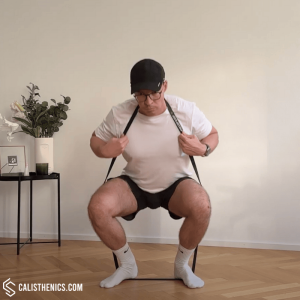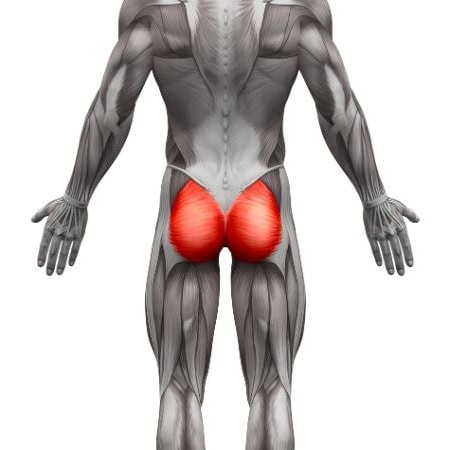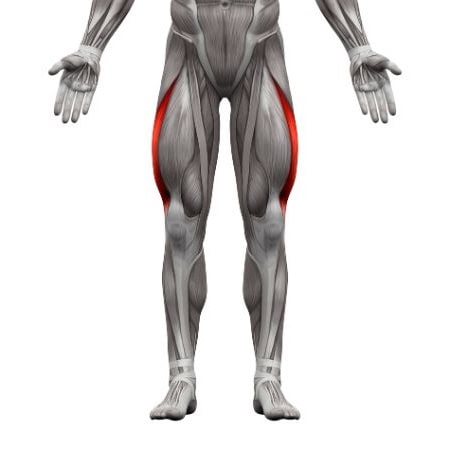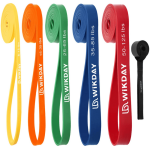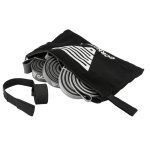Banded Squats
How to do Banded Squats?
Banded squats are a dynamic lower-body exercise that adds extra resistance to traditional squats using a resistance band. This movement primarily targets the quadriceps, glutes, hamstrings, and core while increasing overall stability and muscle activation. The added resistance from the band intensifies the squat, making it more challenging and effective for building strength, improving mobility, and enhancing balance. Banded squats are a great addition to any fitness routine, offering benefits for both beginners and advanced athletes.
Steps to Perform a Proper Banded Squat:
1. Set Up with the Resistance Band:
• Stand with your feet shoulder-width apart, toes pointing slightly outward.
• Place a resistance band just above your knees or around your thighs. Make sure the band is tight enough to create tension but not too restrictive.
2. Engage Your Core and Set Your Posture:
• Engage your core by pulling your belly button toward your spine to maintain a neutral spine.
• Keep your chest up, shoulders back, and your back straight throughout the movement.
3. Initiate the Squat:
• Inhale as you push your hips back and bend your knees to lower into a squat position. Imagine sitting back into a chair.
• Keep your weight in your heels and make sure your knees track in line with your toes, resisting the pull of the band to let your knees collapse inward.
• Lower down until your thighs are parallel to the ground or as deep as your mobility allows while maintaining proper form.
4. Drive Back Up:
• Exhale as you press through your heels to stand back up, extending your hips and knees to return to the starting position.
• Squeeze your glutes at the top of the movement to ensure full activation.
5. Repeat the Movement:
• Perform the desired number of repetitions, keeping tension in the resistance band throughout the exercise.
Benefits of Banded Squats
• Enhances Glute and Hip Activation: The resistance band adds extra tension on the hips and glutes, promoting greater muscle activation, especially in the gluteus medius and minimus, which are often underutilized in regular squats.
• Improves Knee Tracking and Stability: By resisting the inward pull of the band, you improve knee alignment and stability, which helps reduce the risk of knee injuries and ensures proper squat form.
• Strengthens the Lower Body: Banded squats target all the major muscles of the lower body, including the quadriceps, hamstrings, and glutes, helping to build strength and endurance.
• Boosts Core Stability: This exercise engages the core muscles to maintain balance and stability throughout the movement, promoting overall core strength.
• Improves Hip Mobility: Banded squats help improve hip mobility and flexibility by challenging the hips to move through a wider range of motion while resisting the pull of the band.
• Portable and Versatile: Resistance bands are lightweight and portable, making banded squats a versatile exercise that can be performed anywhere—whether at home, in the gym, or while traveling.
• Injury Prevention: The added resistance helps strengthen the hip abductors and stabilizers, which can reduce the risk of injury in the knees and hips during other exercises or daily activities.
• Great for Warm-Ups or Activation: Banded squats are an excellent warm-up exercise, as they activate the glutes, hips, and core before heavy lifting or athletic activities.
Common Mistakes to Avoid
• Letting the Knees Collapse Inward: One of the most common mistakes is allowing the knees to collapse inward during the squat. Focus on pressing outward against the band to keep your knees in line with your toes.
• Rounding the Lower Back: Avoid rounding your lower back as you squat. Engage your core and keep your chest lifted to maintain a neutral spine throughout the movement.
• Rising onto the Toes: Keep your heels on the ground as you squat. Rising onto your toes can shift the focus away from the glutes and hamstrings, increasing the risk of knee strain.
• Using Momentum: Perform the exercise slowly and with control, avoiding the use of momentum to push through the movement. Controlled movement ensures full muscle engagement and reduces the risk of injury.
• Arching the Back at the Top: Avoid overextending your lower back when standing up from the squat. Stand tall with your hips and core engaged, but do not arch your back.
Tips for the proper execution of Banded Squats
Knee Alignment: Focus on keeping your knees in line with your toes. The resistance band will try to pull your knees inward, so make sure to press outward against the band to prevent knee collapse.
Core Engagement: Keep your core engaged throughout the movement to maintain balance and protect your lower back.
Depth: Lower your hips until your thighs are parallel to the ground or as deep as your mobility allows while maintaining proper form. Deeper squats engage the glutes and hamstrings more effectively.
Controlled Movement: Perform the exercise slowly and with control, especially when lowering into the squat. Avoid bouncing at the bottom.
Breathing: Inhale as you lower into the squat and exhale as you stand back up. Proper breathing helps maintain control and ensures smooth movement.
Muscles worked when doing Banded Squats
Primary Muscles:
•Quadriceps: The front of the thigh is heavily engaged as you lower into the squat and push back up to the standing position.
•Glutes: The gluteus maximus and medius are activated throughout the squat, especially when pressing against the resistance band and driving up from the bottom of the movement.
Secondary Muscles:
•Hamstrings: Assist in stabilizing and controlling the descent and ascent of the squat, particularly when standing back up.
•Core: The abdominals and obliques help stabilize the torso and maintain balance throughout the movement.
•Hip Abductors: Engaged to prevent the knees from collapsing inward, especially when pressing outward against the resistance band.
•Lower Back: The erector spinae muscles work to maintain a neutral spine and proper posture during the movement.
•Calves: Provide stability and help balance the lower body throughout the squat.
Primary Muscle(s):
Secondary Muscle(s):
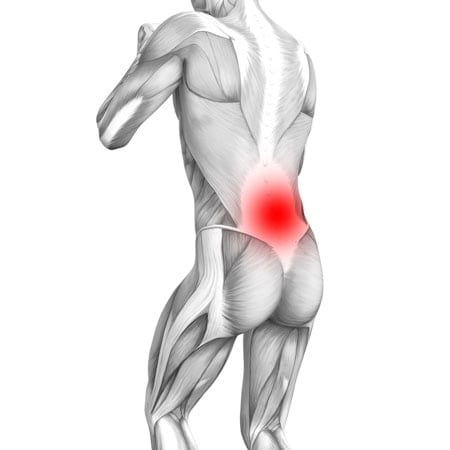
Lower back
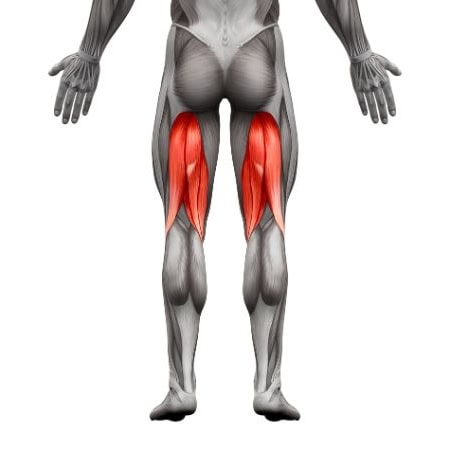
Hamstring
Adjust the difficulty of Banded Squats
How to make Banded Squats harder?
How to make Banded Squats easier?
How to make Banded Squats harder?
To make Banded Squats harder:
-
Use a Heavier Resistance Band: Switch to a band with more resistance to increase the challenge, especially for your glutes, hip abductors, and quadriceps.
-
Increase Depth: Perform deep squats, lowering your hips below parallel to further engage the glutes and hamstrings.
-
Add Weights: Hold a dumbbell or kettlebell in front of your chest (goblet squat style) to add extra resistance and make the squat more challenging.
-
Increase Repetitions or Sets: Perform more repetitions (e.g., 15-20) or add additional sets to challenge your endurance and strength.
-
Add a Pause: Pause at the bottom of the squat for 2-3 seconds before standing back up. This increases time under tension and further engages the muscles.
How to make Banded Squats easier?
To make Banded Squats easier:
-
Use a Lighter Resistance Band: Start with a lighter resistance band that provides less tension to make the exercise more manageable while maintaining proper form.
-
Squat to a Higher Depth: Perform partial squats, lowering only partway down instead of fully squatting, to reduce the intensity while building strength gradually.
-
Perform Fewer Repetitions: Start with a smaller number of repetitions (e.g., 8-10) and increase the number as your strength and stability improve.

